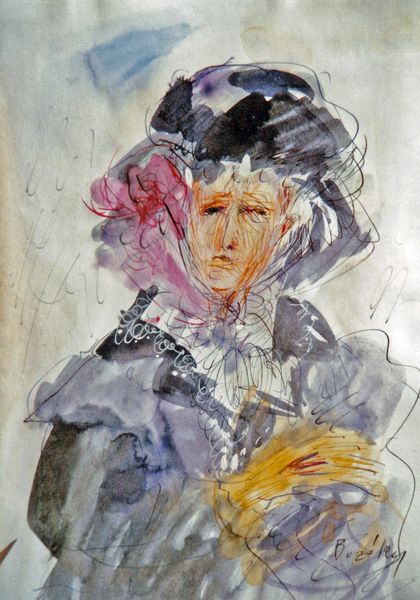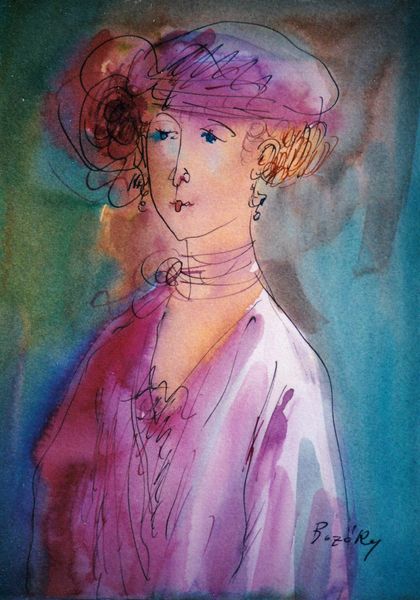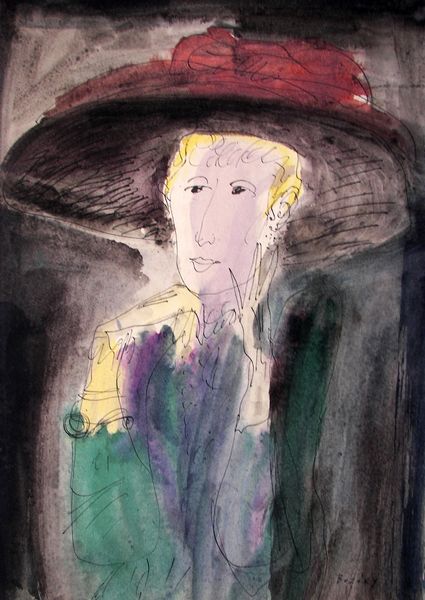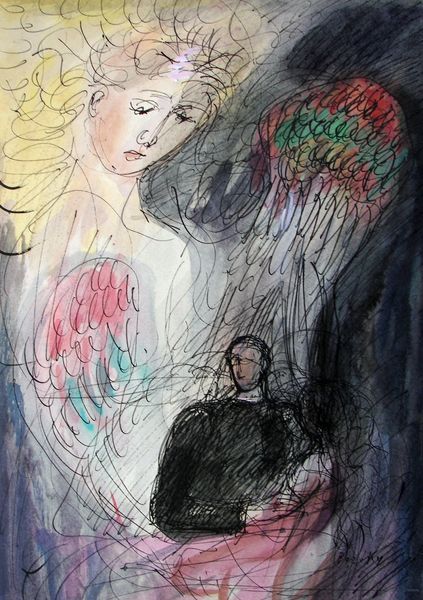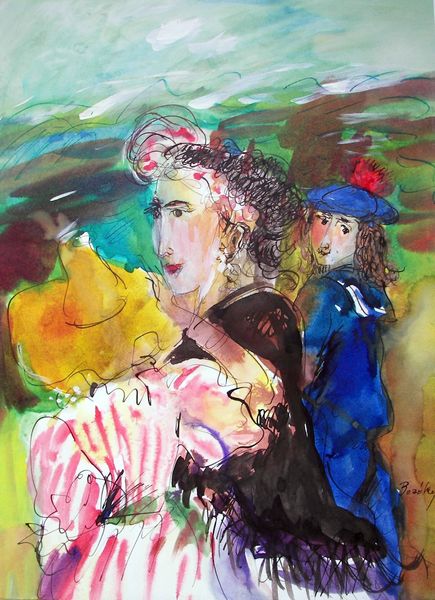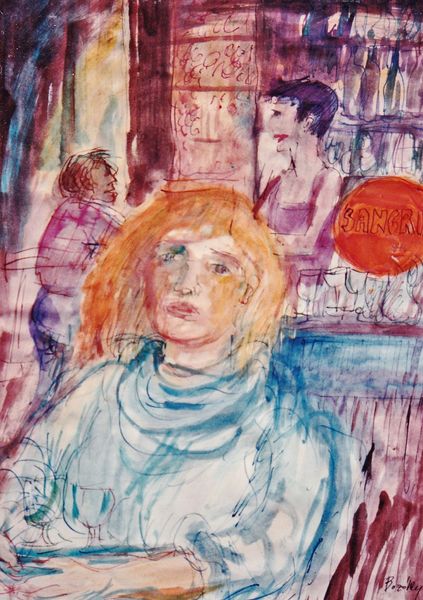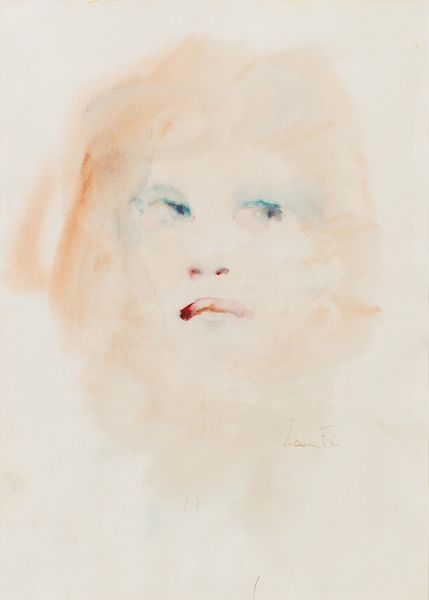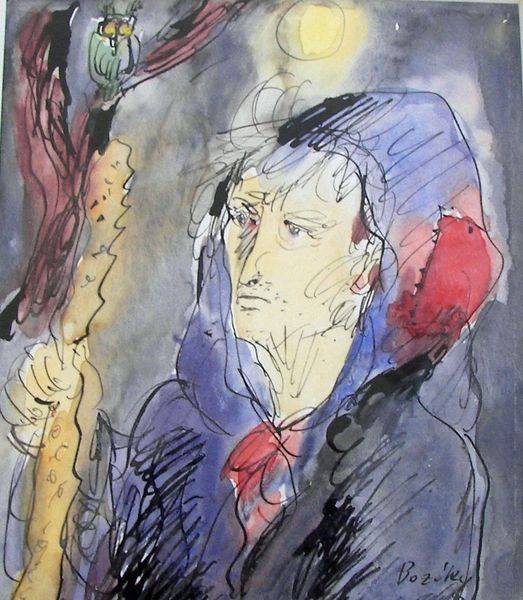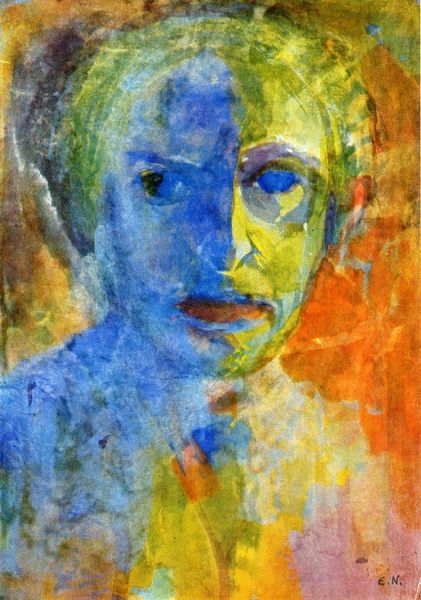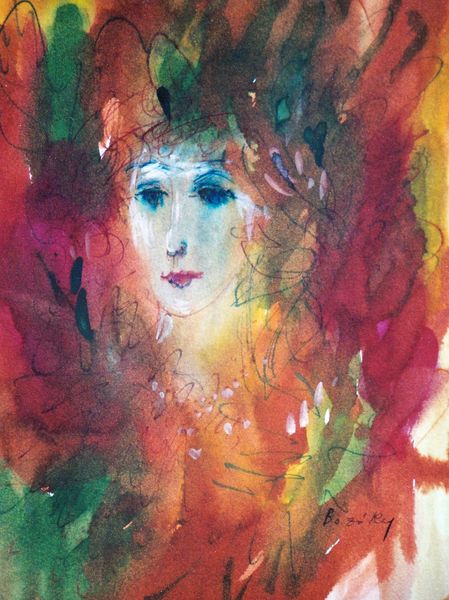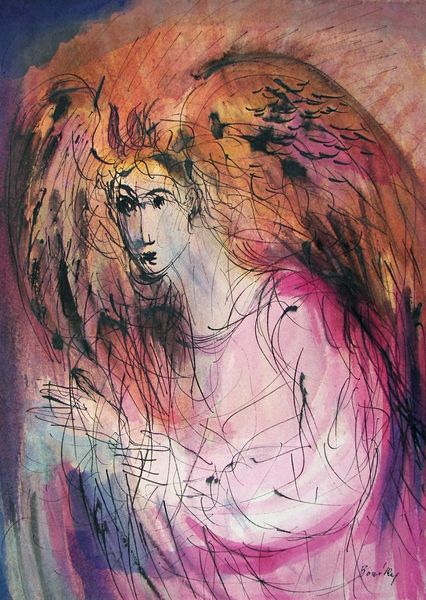
#
abstract painting
#
possibly oil pastel
#
handmade artwork painting
#
fluid art
#
acrylic on canvas
#
paint stroke
#
painting painterly
#
nose
#
watercolour bleed
#
watercolour illustration
#
watercolor
Dimensions: 42 x 29 cm
Copyright: Maria Bozoky,Fair Use
Curator: Here we have Maria Bozoky's "Proust: Madame Verdurin," completed in 1979. It’s a watercolour, a delicate and challenging medium. What's your immediate take on this work? Editor: Chaotic beauty. I see an individual trapped within restrictive social expectations – perhaps from the almost strangled gesture, the tightly pursed lips, to the overly rosy cheeks and that church looming in the background as a societal standard. Curator: Precisely. Watercolour lends itself well to depicting Verdurin’s ambiguous presence in Proust’s novel – the social climber, forever in-between. Think about how the artist employs swift strokes, suggestive yet undefined forms. Even the lines feel… anxious, darting every which way. The blue surrounding her evokes both refinement and melancholy, and those expressive lines remind me of art informing art, echoing other works from this same time period. Editor: The almost cartoonish rendering can also reflect a subtle social critique; there is caricature involved when considering representation. It underscores Verdurin's exaggerated traits—her affected manners, her relentless ambition. In what ways is her internal, and inevitably, societal turmoil captured through the iconography? Curator: The 'bleeding' effect, as if the image is actively dissolving, evokes Verdurin's own fluctuating social status, doesn't it? Remember, the novel explores the themes of memory, loss, and the elusive nature of identity. The nose dominates. Often a phallic symbol, it perhaps references the gendered social strata. The fact that it dominates, but is also 'falling' indicates something quite significant about Madame Verdurin's role. She believes in her own superiority, yet ultimately history will not. Editor: The absence of strong color lends a ghost-like presence, perhaps indicting her presence is merely fleeting; will it have meaning in time? Considering the almost manic energy with which the watercolours collide—this serves not only as a portrait, but also as social commentary. Curator: It truly reveals how we see society’s elite – fragile yet ostentatious, haunted by transience, constantly negotiating societal norms that both constrict and define them. Editor: Absolutely. In essence, Bozoky has encapsulated complex themes within the social hierarchies that frame art as class, culture, gender, and legacy converge. The portrait acts as a stark historical indictment as its message resonates to our own era.
Comments
No comments
Be the first to comment and join the conversation on the ultimate creative platform.
